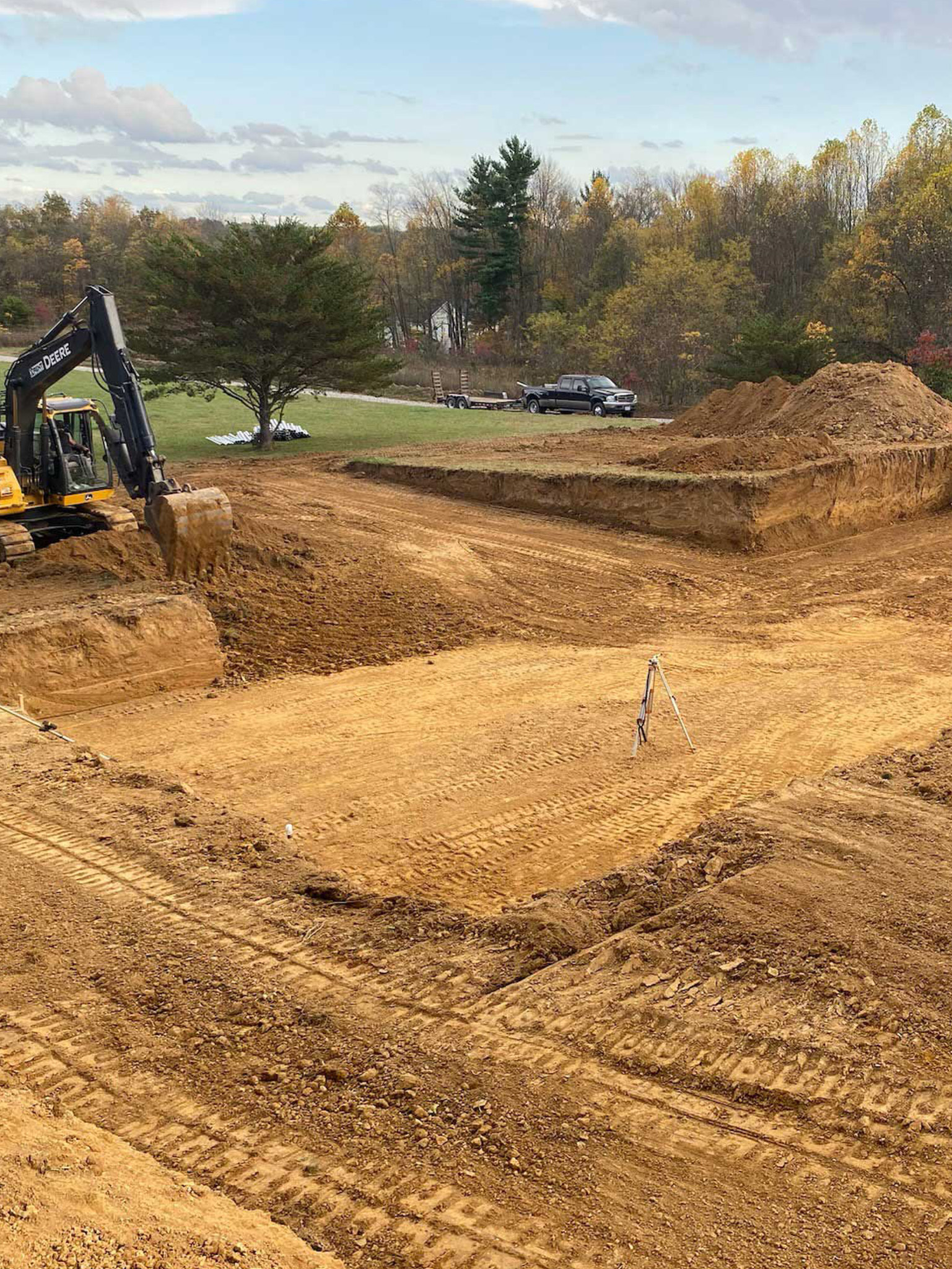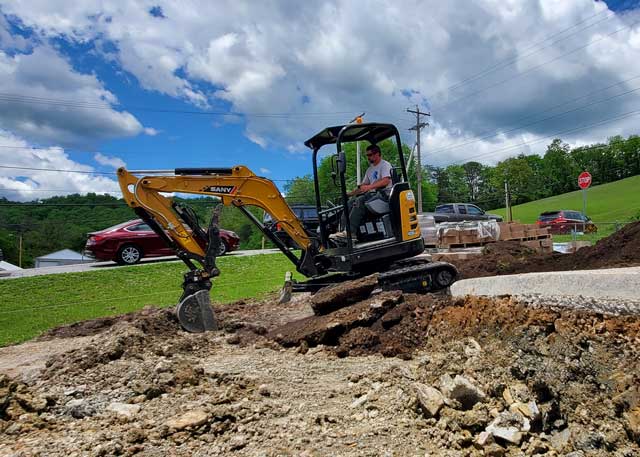Best Dump Truck Companies in Ohio - Top-Rated Dump Truck Providers
Best Dump Truck Companies in Ohio - Top-Rated Dump Truck Providers
Blog Article
Thorough Expedition: The Science Behind Superior Excavation Practices
The realm of excavation techniques is a domain name where scientific research links with workmanship to uncover the mysteries hidden below the earth's surface. From ancient hand devices to modern-day hydraulic excavators, the advancement of excavation methods has been a testimony to human ingenuity and technical improvements. Nevertheless, what truly sets remarkable excavation methods apart is a deep understanding of geological concepts, combined with the usage of cutting-edge devices and methods. By discovering the science behind these practices, we can discover the keys that lie beneath our feet and appreciate the precision and competence that go into every dig.
Advancement of Excavation Strategies
Throughout background, the development of excavation strategies has played a crucial function in progressing building methods and archaeological explorations. From the rudimentary tools utilized by our ancestors to the advanced machinery employed in contemporary times, the development of excavation approaches has actually significantly changed how we come close to various jobs.
In ancient times, manual work with fundamental tools such as wheelbarrows, pickaxes, and shovels was the primary technique of excavation. This labor-intensive procedure restricted the depth and range of excavations, often leading to slow-moving development and limited accessibility to certain websites. However, as people progressed, so did the methods and devices made use of for excavation.
The Industrial Revolution marked a transforming point in excavation exercise with the introduction of steam-powered machinery. This technology revolutionized the area, enabling faster and extra substantial excavations. In modern times, innovation plays a critical function in excavation, with advancements like general practitioner systems, drones, and 3D scanning enhancing precision and efficiency in the field. The development of excavation strategies proceeds to shape the method we construct, explore, and understand the world around us.
Role of Technology in Excavation

The combination of advanced modern technology has actually fundamentally changed the field of excavation, improving accuracy and effectiveness to unprecedented levels. Among the key technical improvements that has dramatically impacted excavation methods is the utilization of GPS systems. These systems allow for specific mapping of excavation sites, allowing drivers to properly find below ground utilities and frameworks. Additionally, using telematics in excavation equipment has made it possible for real-time surveillance of machine efficiency, resulting in proactive maintenance and increased operational efficiency.
Furthermore, the advent of 3D modeling and simulation software application has streamlined the preparation process for excavation projects. Engineers and operators can now imagine the whole excavation process before damaging ground, optimizing and identifying potential challenges operations. Combined with this, the implementation of drones in excavation activities has assisted in airborne studies, volumetric measurements, and website examinations with unequaled speed and accuracy.
Geological Principles in Excavation
An understanding of geological concepts is essential for guaranteeing the structural honesty and security of excavation websites. Geological variables play a crucial role in click here now figuring out the expediency and security of excavation tasks (lancaster trenching). One crucial geological principle to consider is the kind of soil or rock existing at the site. Various soil types, such as clay, sand, or crushed rock, have varying levels of security and call for different excavation techniques. For circumstances, cohesive soils like clay might need additional assistance to avoid collapses, while sandy soils might be vulnerable to disintegration during excavation.
By carrying out thorough geological studies and evaluation, excavators and engineers can establish methods to reduce risks and guarantee the effective completion of excavation tasks. Inevitably, including geological concepts right into excavation techniques is crucial for achieving secure, reliable, and sustainable results.

Most Current Tools for Excavation
In the realm of excavation practices, contemporary developments in tools have reinvented the effectiveness and accuracy of excavation processes. One of the current tools making waves in the sector is making use of drones geared up with Our site innovative imaging modern technology. These drones can offer detailed aerial studies of excavation websites, providing real-time data on topography and potential threats. This info aids in much better preparation and decision-making throughout the excavation process.
Another cutting-edge device getting popularity is the execution of 3D printing technology for producing personalized excavation devices. This allows for the manufacturing of specialized tools that are customized to the certain requirements of a task, enhancing performance and reducing downtime.
Moreover, advancements in products scientific research have led to the advancement of stronger and more long lasting excavation devices. lancaster trenching. Tungsten carbide-tipped excavator add-ons, for instance, deal premium performance in difficult ground problems, improving performance on-site
Science's Influence on Excavation Practices

In addition, scientific research study on dirt mechanics and geotechnical engineering has actually given useful insights into dirt actions, allowing excavation experts to make enlightened decisions relating to excavation approaches and soil stabilization methods. Overall, scientific research continues to drive innovation and enhancement in excavation techniques, making excavation projects much more reliable, cost-effective, and lasting.

Conclusion
In verdict, the advancement of excavation methods has been significantly influenced by developments in technology and a deeper understanding of geological principles. The most up to date tools and devices made use of in excavation have improved performance and accuracy in the area. The application of clinical expertise has significantly enhanced excavation techniques, leading to extra efficient and lasting techniques for excavating various kinds of products.
In the world of excavation techniques, contemporary developments in devices have actually transformed the effectiveness and precision of excavation processes. By leveraging scientific principles, the excavation industry has been able to considerably enhance efficiency, precision, and security in excavation processes. GPR permits excavation groups to non-invasively scan and map subsurface frameworks, energies, the original source and prospective threats, allowing them to intend excavation projects with better accuracy and lowered danger of mishaps.
Additionally, scientific study on soil mechanics and geotechnical design has given useful insights right into soil actions, enabling excavation professionals to make educated decisions pertaining to excavation techniques and dirt stabilization techniques. Generally, science proceeds to drive advancement and improvement in excavation techniques, making excavation tasks a lot more effective, affordable, and sustainable.
Report this page